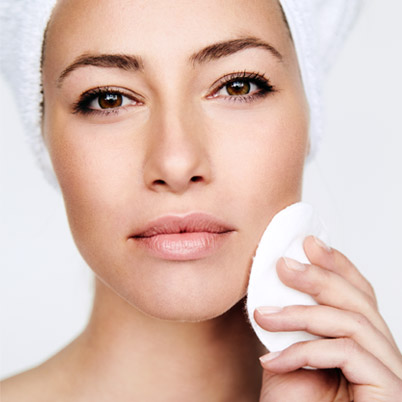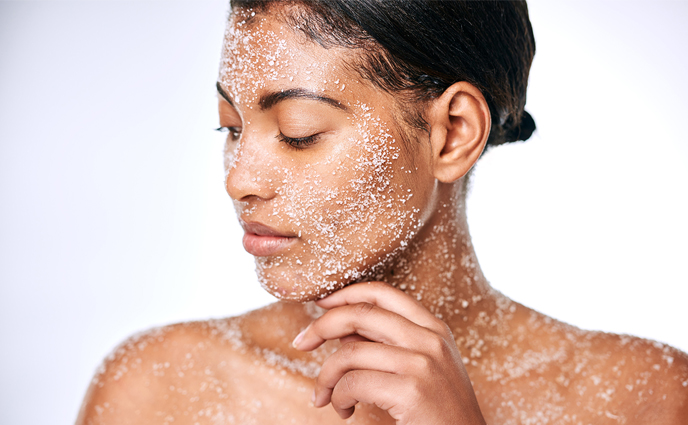While you may notice that your skin looks a little less luminous as the temperatures begin to drop, have you ever stopped to wonder why this little skin-care issue actually happens? According to Dendy Engelman, MD, dermatologist and Director of Dermatologic Surgery at Metropolitan Hospital in New York City, as we move into winter, there is less moisture in the air. As a result, the low humidity levels degrade the skin's natural moisture barrier, which can lead to flaking, cracking and peeling. To combat this moisture loss and build-up of dead skin cells, skin needs extra moisture, as well as extra exfoliation to allow that extra moisture to actually sink in.
Wondering how exfoliating can help care for dry skin in the winter? Engelman points out that exfoliation not only makes the skin look more radiant and smooth, but it also helps moisture penetrate more effectively. When dead, flaky skin cells pile on top of the skin's surface, the skin barrier is compromised and the skin cannot effectively lock moisture in. Regular exfoliation will reveal younger, healthier cells that can properly accept and hold moisture. But that leads us to our next question: What type of regular exfoliation is best?
There are two types of exfoliation: mechanical and chemical. Mechanical exfoliation involves scrubbing skin with an abrasive product like microfiber cloths, beads, brush, sugar, salt, etc.; chemical exfoliation involves the use of salicylic acid, glycolic acid, citric acid, alpha hydroxyl acids, beta hydroxyl acids or enzymes that loosen the glue-like substance that holds the cells together, allowing water to wash them away. Deciding which method is best comes down to your skin type. If you have sensitive skin, you may want to veer away from chemical exfoliators, while oily skin can benefit most from chemical exfoliators.
To help you navigate the world of exfoliators, we've made things a bit easier for you by hand-selecting some of the industry's most gentle exfoliators so that no matter your skin type, you can kiss winter's dry skin goodbye.
Image via Getty
Wondering how exfoliating can help care for dry skin in the winter? Engelman points out that exfoliation not only makes the skin look more radiant and smooth, but it also helps moisture penetrate more effectively. When dead, flaky skin cells pile on top of the skin's surface, the skin barrier is compromised and the skin cannot effectively lock moisture in. Regular exfoliation will reveal younger, healthier cells that can properly accept and hold moisture. But that leads us to our next question: What type of regular exfoliation is best?
There are two types of exfoliation: mechanical and chemical. Mechanical exfoliation involves scrubbing skin with an abrasive product like microfiber cloths, beads, brush, sugar, salt, etc.; chemical exfoliation involves the use of salicylic acid, glycolic acid, citric acid, alpha hydroxyl acids, beta hydroxyl acids or enzymes that loosen the glue-like substance that holds the cells together, allowing water to wash them away. Deciding which method is best comes down to your skin type. If you have sensitive skin, you may want to veer away from chemical exfoliators, while oily skin can benefit most from chemical exfoliators.
To help you navigate the world of exfoliators, we've made things a bit easier for you by hand-selecting some of the industry's most gentle exfoliators so that no matter your skin type, you can kiss winter's dry skin goodbye.
Image via Getty
Buy now
Buy now
Buy now
Buy now





